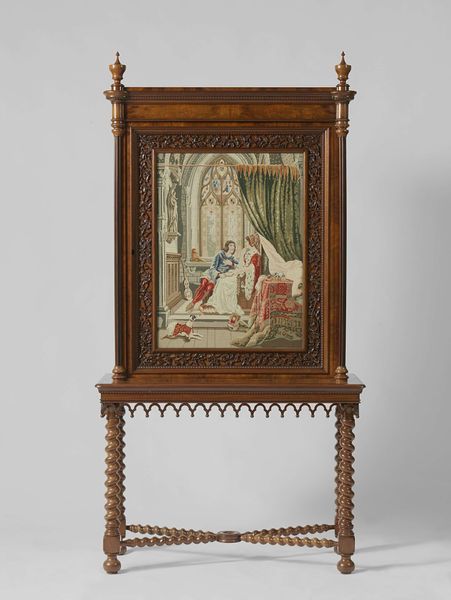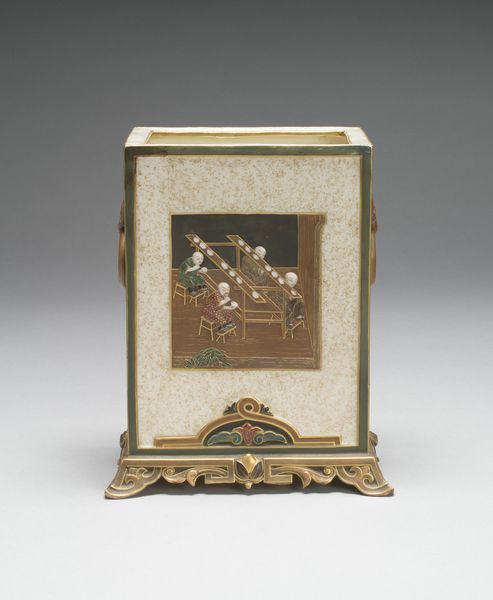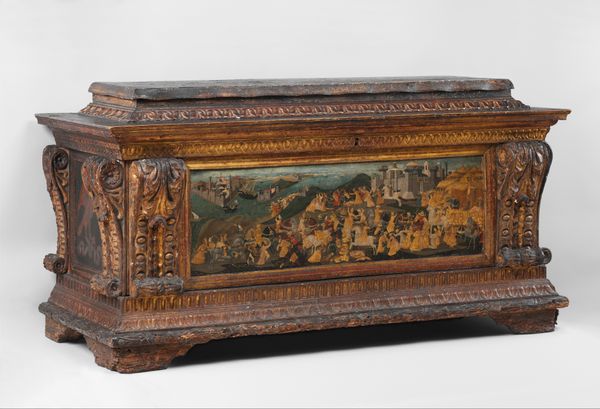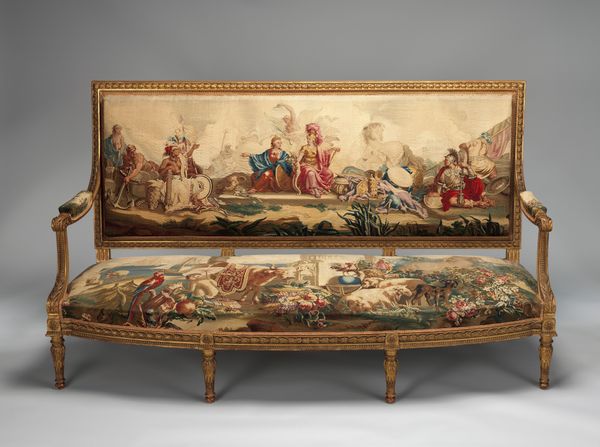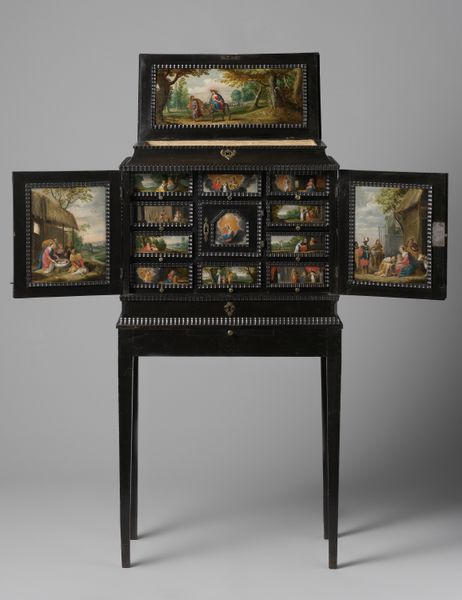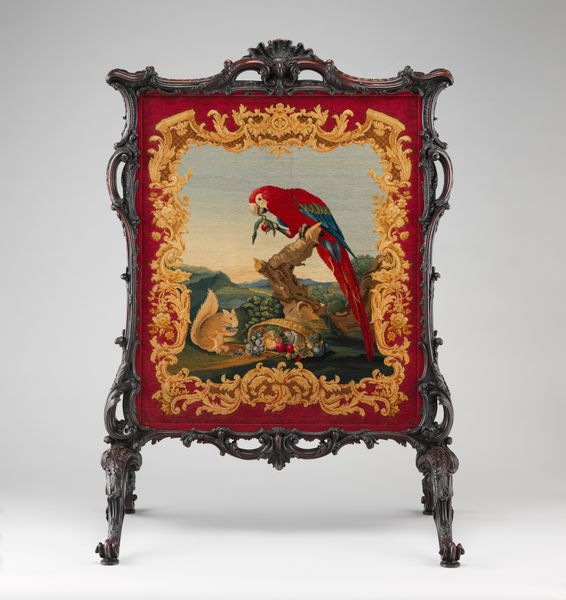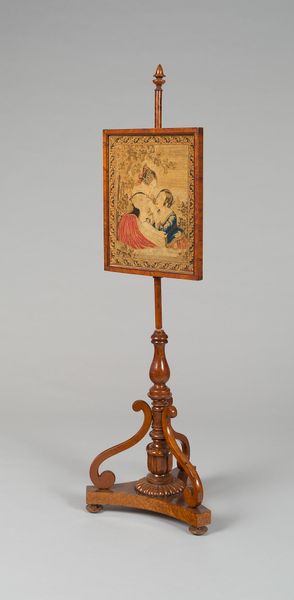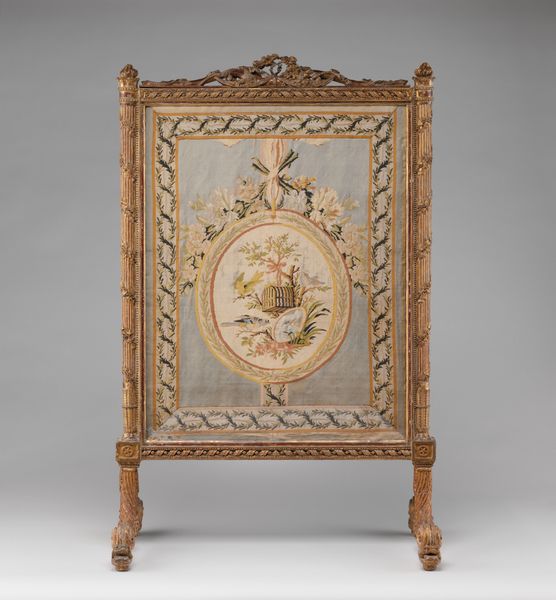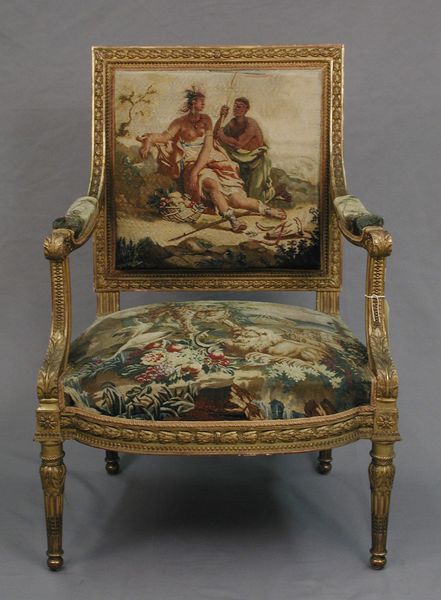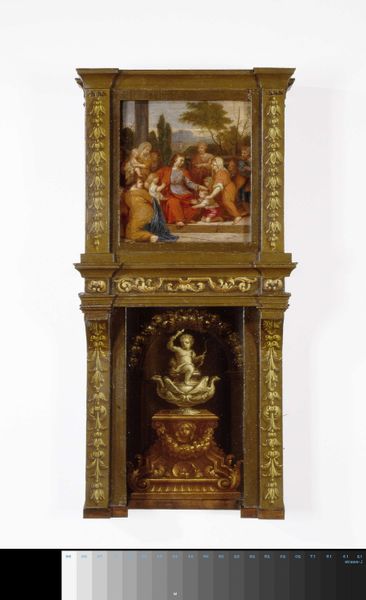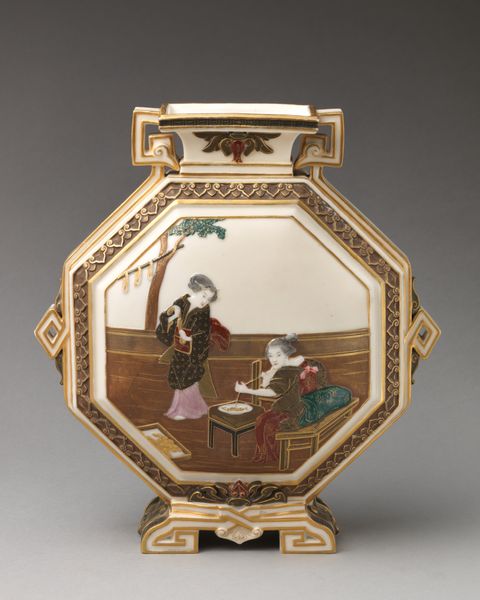
carving, metal, bronze, wood
#
neoclacissism
#
carving
#
metal
#
landscape
#
bronze
#
traditional architecture
#
wood
#
history-painting
Dimensions: height 122.5 cm, width 78 cm, depth 42 cm, width 76 cm, depth 39 cm
Copyright: Rijks Museum: Open Domain
Curator: Welcome. Before us stands a stunning example of Neoclassical craftsmanship: the "Secretary," created around 1803 by Adam Weisweiler. It incorporates wood, bronze, and metal in its construction. Editor: Immediately, the contrasting textures jump out at me—the sleek bronze figures against the warmly patterned wood grain. It feels very consciously designed for both visual interest and practical function. Curator: Indeed. Weisweiler was a master of blending luxury with utility. This piece reflects the late 18th and early 19th century fascination with classical forms adapted for a new era of social refinement. The use of bronze alludes to antiquity but, in its specific historical context, serves also as a status symbol. Editor: I'm particularly drawn to the small landscape scene inlaid within the secretary’s facade. The figures on horseback suggest perhaps, aristocratic leisure, an intentional display of wealth manifested through land ownership and elaborate travels? Curator: Precisely. And observe how the architectural form echoes classical temples, reminding us of a hierarchical structure and aspirations towards an idealized past that informed much political imagery during that time. Editor: And I see that the construction process is just as crucial to understanding its value. Who were the craftspeople involved in the carving, the bronze casting? Their labor, though unseen, is intrinsically part of its story. Did Weisweiler own the wood mill? Were all the parts made in house? Curator: Those are fascinating questions! Understanding the labor is definitely necessary, although records can be sparse. What this "Secretary" makes so compelling is the manner in which materials, labor, design, and artistic license unite and mirror an elite sociopolitical landscape. Editor: It's more than just a pretty object; it represents the values and power structures of its time, doesn't it? And that it did so with exceptional artisanship just adds depth to the conversation around luxury. Curator: I completely agree. A masterpiece where politics and skillful craftsmanship blend so seamlessly!
Comments
rijksmuseum about 2 years ago
⋮
Severe, rectilinear writing furniture, such as this desk, is typical of the French Empire style. The bronze deco-ration is derived from antiquity. The front legs are shaped like sphinxes: half woman, half eagle. This secretary was bought by the 7th Earl of Elgin in 1804. He is known for having acquired the Parthenon sculptures, which he sold on to the British Museum.
Join the conversation
Join millions of artists and users on Artera today and experience the ultimate creative platform.
